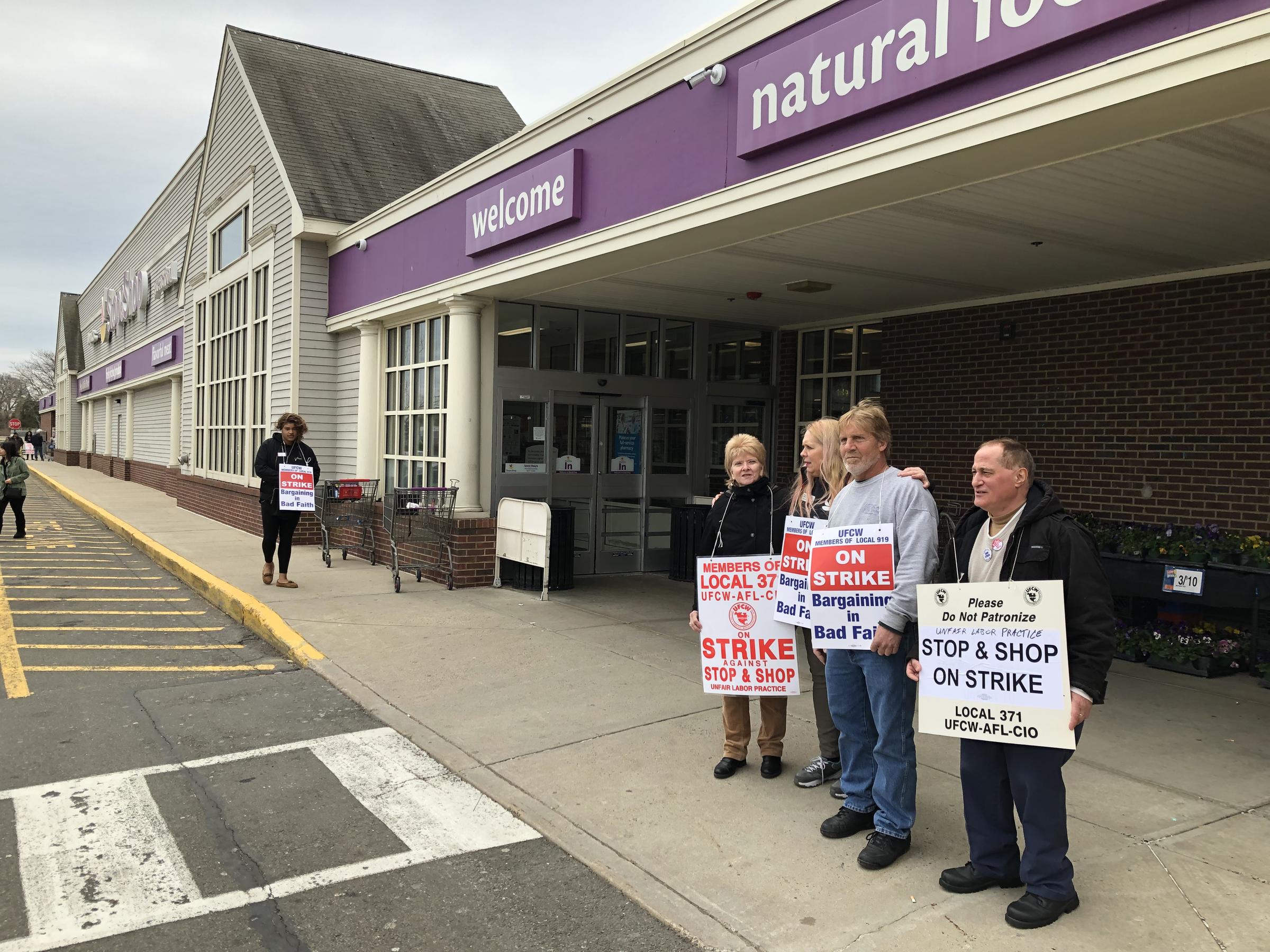
After more than three months of negotiations and 11 days on strike, over 30,000 Stop & Shop workers have reached a tentative agreement with the supermarket chain that they said met their demands for better pay, health care coverage and other benefits. The employees, members of the United Food and Commercial Workers International Union at more than 240 Stop & Shops across Connecticut, Massachusetts and Rhode Island, returned to work on April 22 after reaching the deal on Sunday.
During an interview, union spokeswoman Jessica Raimundo said “The new contract does satisfy the different points of contention. The agreement preserves health care and retirement benefits, provides wage increases, and maintains time-and-a-half pay on Sunday for current members. Under this proposed contract, our members will be able to focus on continuing to help customers in our communities.” Details of the proposed three-year agreement will not be made public until the 31,000 union members across five locals ratify the contract.
A previous three-year contract expired on Feb. 23, and workers had protested what they considered cuts in the new contract to health care, take-home pay and other benefits. Stop & Shop continued negotiations with the union throughout the strike. During negotiations, Stop & Shop employees argued that the chain’s parent company, Ahold Delhaize, reported profits of more than $2 billion to its shareholders last year, and could afford to compensate workers better.
Stop & Shop is a subsidiary of Dutch supermarket giant Ahold Delhaize, with 415 stores across the Northeast. Workers at company stores in New York and New Jersey were not on strike. Stop & Shop is one of the last remaining union shops in the industry and the largest grocery store chain in New England.
Workers on strike included cashiers, stockers, bakers, deli clerks and butchers. When the strike began, Stop & Shops across the three states set in motion a contingency plan to keep the stores open. The chain sent out support staff members and temporary replacement workers to several supermarkets but some stores were forced to close during the strike. The company limited its offerings amid the strikes. Stop & Shop President Mark McGowan said in a letter April 16 that most stores would remain open for 12 hours, seven days a week. However, he said bakery, customer service, deli, seafood counters and gas stations would not be operational.
Stop & Shop released a statement following the end of the strike and said it was thankful for its customers’ patience. “The tentative three-year agreements, which are subject to ratification votes by members of each of the union locals, include: increased pay for all associates; continued excellent health coverage for eligible associates; and ongoing defined pension benefits for all eligible associates. Our associates’ top priority will be restocking our stores so we can return to taking care of our customers and communities and providing them with the services they deserve. We deeply appreciate the patience and understanding of our customers during this time, and we look forward to welcoming them back to Stop & Shop.”
Read more
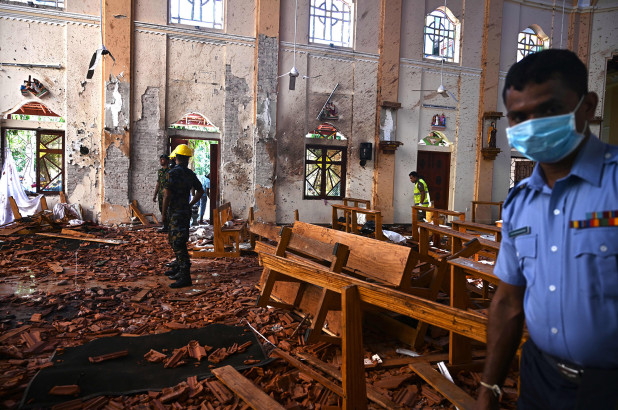
The death toll from Easter Sunday’s bomb attacks targeting hotels and churches in Sri Lanka has climbed to 359, as authorities said they defused another bomb in downtown Colombo and arrested more suspects. Nearly 500 people were injured during the coordinated bombings across the island nation. Sri Lankan officials say the attacks were a response to last month’s attacks on two mosques by a white nationalist gunman who killed 50 Muslim worshipers in the New Zealand city of Christchurch.
Sri Lankan officials say a little-known Muslim organization called National Thowheed Jama’ath carried out the series of Easter Sunday suicide bombings with another Sri Lankan group known as the JMI. Officials also apologized for failing to respond to multiple tip-offs ahead of Sunday’s eight attacks. A confidential memo which was ignored, circulated among Sri Lankan security agencies 10 days prior to the attack that warned of a possible attack and gave the names, addresses and phone numbers of some of the suspects.
The first round of deadly attacks hit busy Easter services at Catholic churches in the heart of Sri Lanka’s minority Christian community in and around the capital Colombo, as well as a Protestant church in the eastern city of Batticaloa. Bombs also exploded in three luxury hotels in Colombo, with another blast striking a hotel near a zoo south of the capital, and a final blast at a private home believed to be tied to the attackers.
Sri Lankan President Maithripala Sirisena requested Pujith Jayasundara, Sri Lanka’s police chief, to step down over the failure to thwart the Easter Sunday attacks but ath first, the police chief refused. Sirisena blamed Jayasundara and Hemasiri Fernando, the defense secretary, for not sharing advance warnings of the attacks with him. Fernando resigned earlier in the week and Jayasundara later resigned. Police are looking for 140 people with links to the Islamic State of Iraq and Levant (ISIL or ISIS), according to President Maithripala Sirisena.
President Maithripala Sirisena has revealed his short and long-term measures to bring back normalcy to the island nation coming to terms with the Easter bombings. “Every household in the country will be checked. The lists of permanent residents of every house will be established to ensure no unknown person could live anywhere,” he said, pointing out that during the fight against LTTE, similar methods were adopted. Sirisena acknowledged “a serious lapse” on the part of the country’s defence secretary and top police official, who failed to inform him about an April 4 letter from a “friendly foreign country” warning about a possible attack.
Despite the police having already detained a lot of suspects, they warned that some people believed by authorities to be linked with the attacks were still at large and may possess explosives. Prime Minister Ranil Wickremesinghe has stated that the father of two of Sunday’s alleged suicide bombers, a leading businessman who is active in politics, has been arrested on suspicion of aiding his sons in carrying out the attacks.
Read more
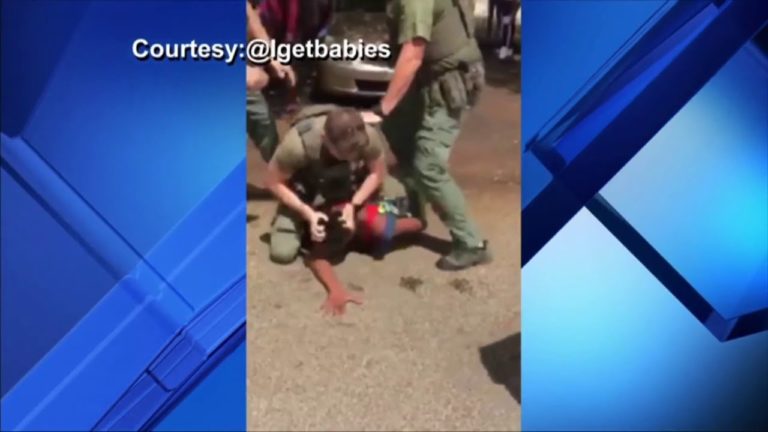
The Broward County Sheriff’s Department says it will probe the actions of officers caught on camera brutally assaulting teenagers after responding to a call about an after-school fight in a McDonald’s parking lot near their high school in Coral Springs. Broward County Mayor Mark Bogen said in a statement that the deputy shown in the viral video should be fired. The incident between the teen and deputy was captured on cellphone video by a group of teens who had gathered at a McDonald’s parking lot after school to watch two teens fight.
Broward Sheriff Gregory Tony said he would launch a “thorough investigation” into deputies who are shown on video pepper-spraying, tackling and punching teens near J.P. Taravella High. “It may take some time but we will be transparent, and if folks need to be held accountable, it shall be done,” he said in a video statement. One of the deputies involved, Christopher Krickovich, has been with the department for six years and is on restricted assignment pending the investigation. The other deputy, Sgt. Greg LaCerra, has been with the Sheriff’s Office for 17 years and his status is unclear.
The cellphone video appears to show one deputy who responded to the scene restraining a teenager in the parking lot when another deputy pushes away a girl who appeared to grab a phone from the ground. When another teen intervenes, the same deputy then uses pepper spray on the teen before grabbing him and taking him to the ground. Two other deputies then jump in, one of them straddles the boy who is face down on the ground, punched him in the head repeatedly before grabbing him by the back of the neck and slamming his face into the pavement. The victim, a 14-year-old student at J.P. Taravella High School, was left bleeding heavily and was later rushed to the hospital in an ambulance.
It all began with the initial 911 call at 2:55 p.m. reporting that several students had gathered in the Tamarac McDonald’s parking lot, a popular after-school hangout. A follow-up call at 3:08 p.m. reported that kids were fighting. Krickovich wrote in a police report that he and LaCerra saw a fight starting but it ended before they got close enough to break it up. They also spotted a student who had been warned not to trespass at the shopping center and arrested him. “While I was dealing with the male on the ground, I observed his phone slide to the right of me and then behind me.
I observed a teen wearing a red tank top reach down and attempt to grab the male student’s phone,” Krickovich wrote. The teen “took an aggressive stance” toward LaCerra, “bladed his body and began clenching his fists,” Krickovich wrote. At that point, one of the deputies pepper-sprayed and “quickly jumped on the male with the red tank top,” Krickovich wrote, saying he was fearing for his safety. The teen’s “left arm was free and next to him, while he placed his right arm under his face. I struck the male in the right side of his head with a closed fist as a distractionary technique to free his right hand. This technique was successful and I was able to place him into handcuffs without further incident.” Krickovich’s also stated in the police report that the three officers were outnumbered by about 200 students “who were yelling, threatening us and surrounding us, I had to act quickly, fearing I would get stuck or having a student potentially grab weapons off of my belt or vest.”
Broward County Mayor Mark Bogen said the deputy who threw the student to the ground should be suspended at the very minimum and the deputy who punched the student and pushed his head into the ground should be removed.
Read more
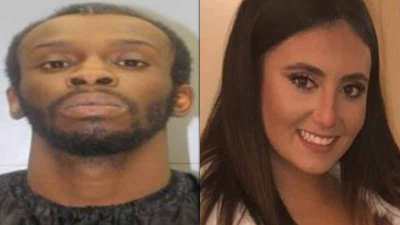
Autopsy results have been released in the case of murdered 21-year-old USC student Samantha Josephson, showing she died of “multiple sharp force injuries.” Police believe the University of South Carolina senior and aspiring lawyer was kidnapped and killed after she mistakenly got into a car she believed to be her Uber ride after leaving a bar around 2am Friday morning in Columbia, South Carolina. The suspect, Nathaniel Rowland, was arrested Saturday and charged with murder and kidnapping.
The investigation began after friends of 21-year-old Josephson filed a missing person’s report around 1:30 p.m. Friday. They told police they were separated from her the night before in the Five Points district and had not been able to get in touch with her after she did not return to The Hub, an apartment complex on Main Street where she lived with friends. Clarendon County Sheriff’s deputies responded to a report of a body found in a rural area 70 miles from Columbia, around 4pm Friday. Turkey hunters found a body, later identified as Josephson, in a field near a wooded area about 40 feet off a dirt road.
Around the same time, Columbia police publicized Josephson was missing and shared details of a related vehicle. Surveillance video shows Josephson standing near the road of a crowded street corner, on her cell phone, reportedly trying to find her Uber driver. A black Chevrolet Impala pulls up into a parking spot next to where she’s standing and she’s seen getting into the back seat of the vehicle. Prosecutors said 24-year-old Nathanial Rowland, who is not a driver for Uber or Lyft, activated the child locks on his car when Josephson got in, trapping her.
Rowland was arrested around 3 a.m. Saturday, after a Columbia canine officer on patrol spotted the black Chevrolet Impala that matched the description of the vehicle involved in Josephson’s disappearance, two blocks from the Five Points area. When the officer stopped the vehicle and asked Rowland to step out of the vehicle, he fled on foot. The officer took him into custody after a foot chase and returned to the vehicle, where a large amount of blood was discovered in the trunk of the vehicle.
Investigators would later find her cell phone, bleach, window cleaner and more blood in the vehicle. Investigators also discovered that the child locks were enabled so Josephson would have been trapped in the back seat of the car. Police say that there was a woman in the car with Rowland at the time of his arrest, she has been described as a friend of the suspect and is co-operating with the investigation.
Arrest warrants say Josephson had “numerous wounds evident on multiple parts of her body to include her head, neck, face, upper body, leg and foot.” Josephson was a senior at USC majoring in political science, according to Jeffrey Stensland, a USC spokesman from the communications department. Josephson would have graduated this spring and had planned to start law school in the fall.
Samantha’s father, Seymour Josephson, said he would dedicate himself to improving the safety of ride-sharing services. Her mother Marci Josephson described her daughter as bubbly, loving, kind and full of life. In her comments to the judge she said “There are no words to describe the immense pain his actions have caused our family and friends. He’s taken away a piece of our heart, soul and life.” She also described Rowland’s alleged actions as senseless and vile.
Rowland has not appeared in court and the date of his bond hearing has not yet been set but he will remain in jail until then. If convicted, Rowland could face up to life in prison or the possibility of the death penalty. Under South Carolina law, kidnapping carries up to 30 years in prison.
Read more

Authorities have identified a second survivor of the February 2018 mass shooting at Marjory Stoneman Douglas High School in Parkland, Florida, who has committed suicide this month. Sixteen-year-old Calvin Desir took his own life on Saturday, just days after 19-year-old Sydney Aiello had killed herself. Seventeen students, staff and teachers were killed in Parkland on Valentine’s Day last year, in one of the deadliest school shootings in U.S. history.
Sydney Aiello had suffered from PTSD and survivor’s guilt after the shooting that that took the life of close friend Meadow Pollack. It’s unclear if Calvin, who was a sophomore at the school, suffered from survivor’s guilt as Aiello’s family have confirmed. School district officials, community leaders, law enforcement and concerned parents met on Sunday to discuss how to address the trauma and identify possible warning signs. A mental health and suicide prevention town hall meeting was scheduled for Wednesday, March 27 at 6 pm, at the Coral Spring City Hall. A spokesperson for the city hall said “We simply cannot let the events of that day take the lives of any more of our children. As a city, we are committed to shining a light on those who suffer in the darkness. The mental health of our children and all those who have been affected by the MSD tragedy must be made a priority.”
The meeting hosted a panel of experts who answered questions from those wanting to help children cope with trauma. Experts offered advice on how parents can connect with teenagers who isolate themselves, discussed alternative methods of therapy and whether adults can safely talk with children about suicide. Jackie Rosen, executive director of the Florida Initiative for Suicide Prevention, said parents should feel confident to talk about mental health with their children and begin those conversations “as soon as possible.” Experts also encouraged promoting mental health for teachers. “To the teachers in the room, the first thing I’m going to ask you to do is to take care of you, take care of yourself and make sure that you are as strong and as nurturing as you can be for yourself,” said Patrice Rotolo, clinical director for Smith Community Mental Health. “Take care of your own needs because that’s the best way to meet the needs of your students.”
As news of the Parkland suicides circulated, it was confirmed that the father of a 6-year-old girl who was killed in the 2012 mass shooting at Sandy Hook Elementary School was found dead by apparent suicide on Monday. Jeremy Richman, a neuroscientist who, after the death of his daughter Avielle, devoted his life to finding solutions to brain abnormalities that lead to violence. He founded the Avielle Foundation to support brain science research, with the ultimate goal of preventing violence and building compassion.
Six year old Avielle Richman, who was the only child of Richman and his wife, Jennifer Hensel, was among the 26 people killed in the Dec. 2012 shooting at Newtown’s Sandy Hook Elementary. The couple had two more children after Avielle’s death. Hensel wrote in a statement this week, “To parent our children without my champion shatters my heart and I will love my best friend forever. … Side by side since 1991, Jeremy and I walked a path of deep friendship, marriage, and parenthood. “He succumbed to the grief that he could not escape,” she wrote.
Tragically, these recent deaths speak to how critical it is to shatter the stigma of mental health issues and for people suffering or affected by it to seek help for themselves, loved ones and anyone who we suspect may be in need. If you are in crisis, please call the National Suicide Prevention Lifeline at 1-800-273-TALK (8255) or contact the Crisis Text Line by texting TALK to 741-741.
Read more

The Ethiopian transport minister has announced that early investigations have revealed clear similarities between the crashes of Ethiopian Airlines Flight 302 and October’s Lion Air Flight 610 in Indonesia. The Transportation Department has launched investigations into regulators’ approvals of the Boeing 737 MAX 8, as well as into the development of the aircraft. Just after take-off, both flights, which killed all crew and passengers on board, experienced unpredictable climbs and descents before crashing. Both pilots immediately recognized a problem and tried to return to the airport.
The United States and many other countries have grounded the Max 8s and larger Max 9s as Boeing faces the challenge of proving the jets are safe to fly amid suspicions that faulty sensors and software contributed to the two crashes in less than five months. Both Lion Air Flight 610 and Ethiopian Airlines Flight 302 lacked an optional safety feature that could have saved the lives of 346 people. The safety feature, called an “angle of attack indicator” and an “angle of attack disagree light”—are indicators that Boeing offers only at an additional cost. Another similarity believed to have played a role in both crashes is that the planes’ automated “anti-stall” systems inadvertently pushed both planes’ noses downward.
Pilot training requirements on this software came under scrutiny in the days after the March 10th crash with reports that the pilot and co-pilot had never received updated training on a Boeing 737 Max 8 simulator, even though the airline had the technology available since January. A cockpit recording indicates that the pilots of the doomed Flight 302 were referencing safety manuals but were unable to fix the problem before they crashed. Officials are probing why pilot manuals did not address the feature. Reports are now emerging that the Lion Air flight almost went down the day before the deadly accident, but an off-duty pilot riding in the cockpit knew how to disable a malfunctioning flight control system, which was likely pushing the nose of the plane down.
U.S.-based manufacturer Boeing, which is now under heightened scrutiny around the world, has said previously pilots who have flown earlier models didn’t need additional training. Transportation Secretary Elaine Chao ordered an audit of the training and certification process for Boeing’s 737 MAX 8 aircraft. U.S. prosecutors are also looking into the development of Boeing’s 737 Max jets and a Justice Department probe will examine the way Boeing was regulated by the U.S. Federal Aviation Administration (FAA).
Boeing has said it has “full confidence” in the planes’ safety. Engineers are making changes to the system designed to prevent an aerodynamic stall if sensors detect that the jet’s nose is pointed too high and its speed is too slow. American Airlines pilot and spokesman for their union, Dennis Tajer said that airline officials told the unions that Boeing intends to offer pilots about a 15-minute iPad course to train them on the new flight-control software on Max jets that is suspected of playing a role in the crashes. He called that amount of training unacceptable. “Our sense is it’s a rush to comply — ‘let’s go, let’s go, let’s go,'” Tajer said. “I’m in a rush to protect my passengers.”
These disturbing updates come as families of victims of last October’s Lion Air crash say they were pressured by the airline to sign a pledge not to pursue legal action against the company, in exchange for about $90,000 in compensation which was the minimum amount the families were entitled to under Indonesian law.
Read more

A San Francisco jury found that Monsanto’s Roundup herbicide was a “substantial factor” in the cancer of California resident Edwin Hardeman. Hardeman says he sprayed the widely used herbicide on his property for almost three decades and once got the product directly on his skin. He has been diagnosed with non-Hodgkin’s lymphoma. The jury will now consider damages owed by Bayer, which owns Monsanto. The federal case could have implications for thousands of others accusing the company of making them sick.
More than 11,000 people have filed suit against Monsanto Company (now Bayer) alleging that exposure to Roundup herbicide caused them or their loved ones to develop non-Hodgkin lymphoma, alledging that Monsanto covered up the risks. As part of the discovery process, Monsanto has had to turn over millions of pages of its internal records. More than 760 lawsuits are pending in U.S. District Court in San Francisco and the cases have been combined for handling as multidistrict litigation (MDL) under Judge Vince Chhabria.
The jury came to this verdict despite the judge barring evidence about Monsanto’s efforts to discredit the International Agency for Research on Cancer, after it classified glyphosate as a probable human carcinogen in 2015. Monsanto spent millions of dollars on various secretive tactics aimed at discrediting IARC. Documents show the company discussing using third parties who appeared to be independent of Monsanto to publicly criticize IARC and push Monsanto propaganda points. Internal Monsanto records show the company’s role in ghostwriting an article that appeared on Forbes’ contributors’ platform, and they show that the company was behind a story published by Reuters in 2017 that falsely claimed an IARC scientist withheld information from IARC that would have changed the classification.
The judge also barred evidence about how Monsanto worked to discredit French scientist Gilles-Éric Séralini after publication of his 2012 study findings about rats fed water dosed with Roundup. Internal Monsanto records show a coordinated effort to get the Seralini paper retracted, including an email string between Monsanto employees who apparently were so proud of what they called a “multimedia event that was designed for maximum negative publicity” against Seralini that they designated it as an “achievement” worth recognition.
The judge did allow portions of a 2015 internal Monsanto email to be introduced as evidence. In the email, company scientist Bill Heydens discusses plans to ghostwrite a series of new scientific papers that will contradict IARC’s classification of glyphosate. In the email, Heydens remarks on how this plan is similar to the ghostwriting of a scientific paper written and published in 2000 in response to another study that found glyphosate to be unsafe.
Officials with Monsanto owner Bayer AG are feeling the effects of the decision has the company’s share prices dropped even lower. The company’s shares already took a huge hit in August after the jury in the first Roundup cancer trial found that the company’s herbicides caused cancer. In August 2018, a state jury awarded former school groundskeeper DeWayne “Lee” Johnson nearly $300 million in damages after Monsanto’s Roundup was found to be responsible for his cancer, though the amount was later reduced to $78 million. Of course, Monsanto appealed the verdict and Johnson has cross appealed, seeking to reinstate the jury award.
Read more
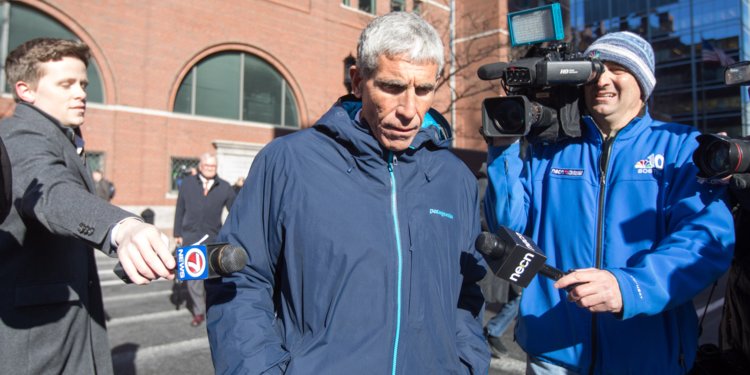
Hollywood actresses and a slew of chief executives are among 50 wealthy people charged in the largest college cheating scam ever prosecuted by the U.S. Department of Justice. Those indicted in the investigation, dubbed “Operation Varsity Blues,” allegedly paid bribes of up to $6.5 million to get their children into elite colleges, including Yale, Stanford, Georgetown and the University of Southern California, federal prosecutors said.
At a news conference, Andrew Lelling, the U.S. attorney for the District of Massachusetts said “This case is about the widening corruption of elite college admissions through the steady application of wealth combined with fraud. There can be no separate college admissions system for the wealthy and, I’ll add, there will not be a separate criminal justice system either.” Lelling said “The parents charged in the case are a catalog of wealth and privilege. They include, for example, the CEOs of private and public companies, successful securities and real estate investors, two well-known actresses, a famous fashion designer and the co-chairman of a global law firm.”
The ringleader of the scam is William Singer, owner of a college counseling service called Key Worldwide Foundation and a company called Edge College & Career Network. Singer allegedly accepted bribes totaling $25 million from parents between 2011 and 2018 “to guarantee their children’s admission to elite schools.” Singer, of Newport Beach, California, pleaded guilty in a Boston federal court on charges of racketeering conspiracy, money laundering conspiracy, conspiracy to defraud the United States and obstruction of justice.
Steven Masera, 69, the accountant and financial officer for the Edge College & Career Network and the Key Worldwide Foundation, was also indicted. Mark Riddell, a private school counselor in Bradenton, Florida, and Masera allegedly worked closely with Singer in the scam, according to the indictment. According to the indictment, Mikaela Sanford, 32, of Folsom, California, another employee of the Edge College & Career Network and the Key Worldwide Foundation, and David Sidoo, 59, of Vancouver, Canada, were also indicted for allegedly working closely with Singer to facilitate the scam.
Singer would allegedly instruct parents to seek extended time for the children to take entrance exams or obtain medical documentation that their child had a learning disability, according to the indictment. The parents were then told to get the location of the test changed to one of two testing centers, one in Houston and another in West Hollywood, California, where test administrators Niki Williams, 44, of Houston and Igor Dvorskiy, 52, of Sherman Oaks, California, helped carry out the scam, the indictment alleges. Riddell, 36, allegedly took ACT and SAT tests for students whose parents had paid bribes to Singer. Singer typically paid Riddell $10,000 for each student’s test.
Singer also allegedly bribed school coaches to give to his clients’ admissions slots reserved for student athletes in sports including crew and soccer. He went as far as to stage fake photos of his student clients engaging in sports they never played, or to digitally place the faces of his clients onto images found online of athletes.
Others charged in the probe include nine coaches at elite schools, two SAT and ACT exam administrators, one exam proctor, a college administrator and 33 parents, including actresses Felicity Huffman and Lori Loughlin. Robert Zangrillo, 52, of Miami, founder and CEO of the private investment firm Dragon Global; Bill McGlashan, 55, of Mill Valley, California, a businessman and international private equity investor; Gordon Caplan, a New York attorney; and Gregory Abbott, 68, founder and chairman of International Dispensing Corp., a New York food and beverage packaging company, and his wife, Marcia Abbott, 59.
Huffman’s husband, actor William H. Macy, was not indicted, but according to the court document he and Huffman were caught on a recorded conversation with a corroborating witness in the case, allegedly discussing a $15,000 payment to ensure their younger daughter scored high on a college entrance exam. Actress Lori Loughlin and her fashion designer husband Mossimo Giannulli allegedly paid $500,000 to USC to have their two daughters falsely designated as crew recruits, though neither daughter ever participated in the sport.
Read more
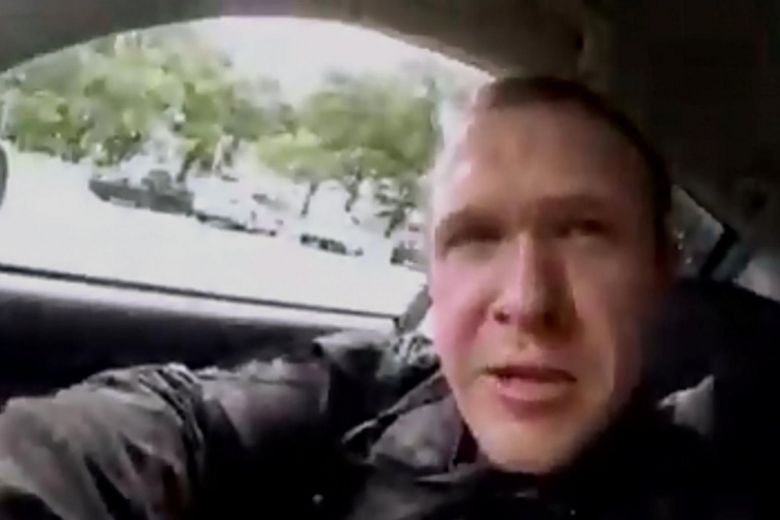
At least 49 people were killed and 48 seriously injured in mass shootings at two mosques in the New Zealand city of Christchurch on March 15, 2019. The attack occurred around lunchtime when the mosques were full of worshipers. Footage of the massacre was streamed live online, and a rambling 87 page manifesto laced with white supremacist references was published just before the shootings unfolded. Police also neutralized two improvised explosive devices attached to one vehicle near the mosque.
The suspected shooter, Brenton Tarrant, 28, live-streamed 17 minutes of video which included footage of himself inside the first mosque, going room-to-room, victim to victim, shooting the wounded from close range as they struggled to crawl away. In the 6 minutes Tarrant was inside, forty-one people were killed at the Al Noor Mosque. The live streamed footage also showed the gunman casually talking and laughing as he walked out of the mosque where he shot at people near the area before driving away at high speed, heading for the Linwood Islamic Centre, about 3 miles away. Another 7 people were killed at the Linwood Mosque, an eighth victim later died in the hospital. Tarrant was apprehended as he fled the Linwood Mosque when two police officers ran his car off the road.
Tarrant has been charged with murder and two other men remain in custody, although their link to the attack is unknown. None of the men in custody have a criminal history. Tarrant is an Australian-born former personal trainer who is believed to have been radicalized during his travels abroad. According to the Independent, Tarrant met with right-wing extremists while taking a trip to Europe in 2017, and also traveled to Pakistan and North Korea. Authorities have said that Tarrant had become obsessed with terrorist attacks committed by radical Islamists in Europe in 2016 and 2017.
According to his manifesto, he started planning a revenge attack about two years prior to the attack and chose his targets three months in advance. The manifesto expresses several anti-immigrant sentiments including hate speech against migrants, white supremacist rhetoric, and calls for non-European immigrants such as Roma, Indians, Turkish people, Semitic people and others allegedly “invading his land” to be removed. Tarrant describes himself as an ethno-nationalist and refers to revenge for European civilians who were casualties in Islamic terrorist attacks within Europe as motivation for his attack. He repeatedly mentions revenge for Ebba Åkerlund, a victim in the 2017 Stockholm truck attack.
Prime Minister Ardern called the incident an “act of extreme and unprecedented violence” and said “this is one of New Zealand’s darkest days.” She also described it as a well-planned terrorist attack. Christchurch mayor Lianne Dalziel stated that she never thought “anything like this” could happen in New Zealand, saying “everyone is shocked”. Many other politicians and world leaders have condemned the attacks and world leaders attribute the attack to rising Islamophobia.
Prime Minister Ardern announced: “Our gun laws will change, now is the time… People will be seeking change, and I am committed to that.” Attorney-General David Parker was later quoted as saying that the government will ban semi-automatic guns but later said the government had not yet committed to anything and that regulations around semi-automatic weapons was “one of the issues” the government would consider.
Read more

An Ethiopian Airlines flight traveling from the Ethiopian capital Addis Ababa to Nairobi, Kenya, crashed, killing all 157 passengers and crew on board. The Boeing 737 Max 8 jetliner was carrying passengers of 35 different nationalities, including eight Americans and 21 United Nations staffers. Sunday’s crash triggered a global grounding of Boeing 737 Max 8 jets after data suggested similarities between the Ethiopian Airlines Flight 302 crash and the Indonesian Lion Air Flight 610 crash in October that killed 189 people.
The pilot of the Boeing 737 jetliner that crashed Sunday immediately noticed trouble as the plane accelerated wildly after takeoff. Within one minute of Flight 302’s departure, Captain Yared Getachew calmly reported a “flight control” problem. “Break break, request back to home,” the captain told air traffic controllers as they scrambled to divert two other flights approaching the airport. “Request vector for landing.”
Air traffic controllers knew the plane was in trouble even before the pilot radioed in that he wanted to turn the plane around. They noticed the plane’s speed accelerated inexplicably and it oscillated up and down by hundreds of feet. Radar showed the aircraft’s altitude was well below what is known as the minimum safe height from the ground during a climb. The plane appeared to stabilize and climbed to a higher altitude, but then began to speed up again in a way that is deemed unsafe. The plane then sped up even more just before it disappeared from radar screens and crashed six minutes after takeoff.
The ill-fated flight crashed near the town of Bishoftu, about 39 miles southeast of Bole International Airport. The plane’s crash left a large crater and debris from the Boeing 737 jet was broken into hundreds of small pieces, making the task of recovering each part complex. The largest engine piece on the site was around the size of a small table. Several dozen forensic investigators and Ethiopian Airlines employees slowly combed the crash site in search of any evidence, raising their hands when they come across anything significant.
The flight data and cockpit voice recorders were sent to Paris where French aviation authorities will probe the heavily damaged black boxes for clues to the tragedy. Preliminary conclusions will take several days and aircraft accident investigations can often take years to complete. Senior Transportation Correspondent David Kerley said investigators will look into the MAX 8’s autopilot functions and the training of the pilots who flew the plane, as well as a mechanical part of the control system that alters the up-and-down movement of the plane’s nose. The mechanism, called a “jackscrew,” is a threaded rod in the tail section of the aircraft that affects the plane’s stability.
Data from the “black boxes,” devices will provide further guidance for investigators as well as some answers for the families of the victims. The National Transportation Safety Board, an independent U.S. agency that investigates transportation accidents and issues widely-respected safety recommendations, also sent three additional investigators to assist in the analysis.
Many speculate whether the software in the plane’s autopilot system might have played a role in the Ethiopian Airlines crash, as it seemed to have done in the fatal crash of an Indonesian Lion Air 737 MAX 8. In the October 2018 Lion Air crash, it appears the pilots failed to disengage the autopilot when the plane’s nose began pitching up and down. It’s possible they were unaware of how to do so since some pilots have complained that the information to disengage autopilot was not readily available, and others have raised concerns about the adequacy of the training process.
Read more












